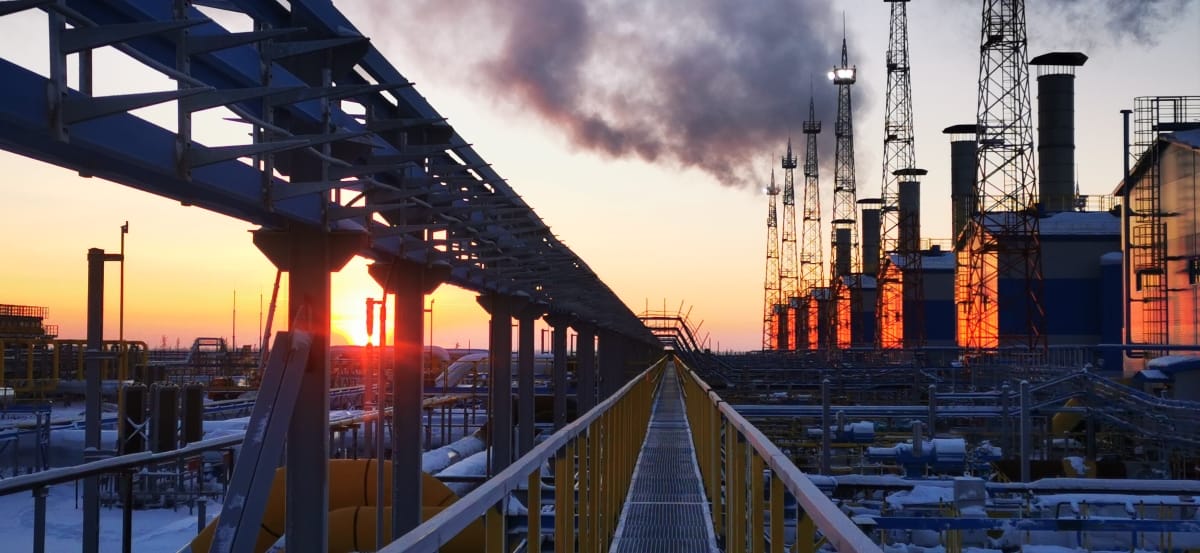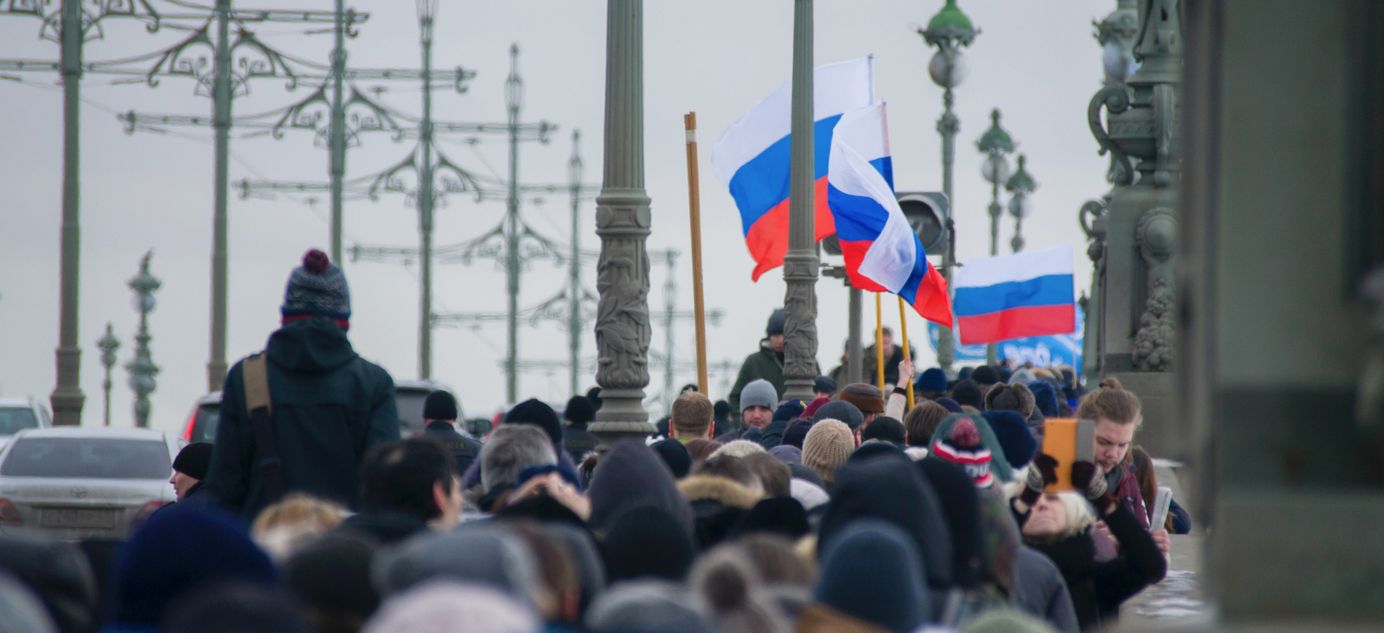
Oil embargo pain
Hello! The European Union last week was unable to sign off on an embargo on Russian oil, but the deal appears to be almost done: the only outstanding detail is how long Hungary, Slovakia and the Czech Republic will be allowed to delay implementation. An oil embargo is one of the most powerful retaliatory measures available to the West when it comes to Russia’s actions in Ukraine. How will the measure affect the Russian economy?

What’s happening?
EU officials have been debating a sixth round of sanctions against Russia and the headline grabber is expected to be an oil embargo, potentially the single biggest blow against Russia’s economy and finances since the start of the “special military operation” in Ukraine.
European Commission chief Ursula von der Leyen presented Wednesday a draft package of sanctions that included a full ban on purchasing Russian oil and oil-related products by the end of 2022. It seems this was agreed to in principle by most EU countries. By Friday, the EU countries most dependent on Russian oil had negotiated individual delays in implementing the ban, but the fundamentals of the plan were unchanged.
- All EU countries, except for those granted temporary exemptions, must stop importing Russian oil within six months. Within eight months, they must stop importing all other Russian oil products. The full ban will be in force before the end of the year.
- From August, European shipping companies will be forbidden from transporting Russian oil by sea, and insurers will be unable to insure such voyages. Insurance for 95 percent of the world’s tanker traffic is underwritten by the International Group of P&I Clubs. Although this is registered in Britain, Bloomberg reported that it will be required to comply with the EU sanctions.
- The maritime ban was originally planned to start in June but, following requests from Greece, Malta and Cyprus, the deadline was put back two months. Europe’s biggest tanker companies sail under Greek, Maltese and Cypriot flags.
- Three countries – Hungary, Slovakia and the Czech Republic – secured deferments for the oil embargo until 2024. For the Czechs, the final deadline could be pushed back to June 2024 if replacement oil supplies cannot be secured sooner. All three countries, which get crude via the Russian Druzhba pipeline, are almost entirely dependent on Russian oil: Hungary gets 58 percent of its oil imports from Druzhba, the Czech Republic 86 percent and Slovakia 96 percent.
The European Commission wanted to announce a final text on an oil embargo Friday, but it proved impossible to complete the agreement by the end of the working week (all EU sanctions must be approved by all 27 members of the bloc).
Instead, EU Foreign Policy chief Josep Borrell gave representatives in Brussels time to continue working over the weekend. If no agreement can be reached, next week will see an extraordinary summit of EU foreign ministers. However, sources told Reuters on Friday that they are confident a deal will be done over the weekend.
The most vocal opponent of the embargo is Hungary, where Prime Minister Viktor Orban is far more sympathetic to Russia than most EU leaders. Orban claimed Friday that any embargo would be a “nuclear bomb” for the Hungarian economy, demanded a five-year deferment for Budapest and warned he would not support the sixth round of sanctions until Hungary’s requirements were met. But he did not threaten to veto the proposals. Behind closed doors, Hungarian officials are responding constructively, sources told Politico and Reuters, and one of them said Orban’s public protestations were merely empty threats.
How would an embargo hit the Russian economy?
EU countries account for more than half of Russia’s oil exports. In January, this was 54.5 percent – or 2.29 million barrels of total Russian exports of 4.2 million barrels per day.
- Russian oil represents almost 40 percent of total oil imports for EU states, according to the International Energy Agency.
- The countries most dependent on Russian oil imports are Finland (65 percent of total oil imports), Poland (55 percent) and Lithuania (46 percent).
Since the start of the “special military operation”, Western companies have been voluntarily refusing to buy Russian oil. However, this “self-sanctioning” only reduced European imports by 12 percent between January and April, according to analysts firm Rystad Energy.
Some doubt the EU can be successful in its plans. It will take more than six months to completely halt EU imports of Russian crude, and claims that imports of Russian oil products (currently about 1.5 million barrels a day) can be eliminated by the end of the year should be greeted with skepticism, according to Bjornar Tonhaugen, the head of Rystad Energy’s oil market research department. Even when the embargo is in force, Russian crude could still be smuggled into Europe, for example by mixing Russian oil with other grades, according to Tonhaugen.
However, even a partial embargo will have serious consequences for Russia.
Russian Finance Minister Anton Siluanov said last month that oil production could fall 17 percent by the end of 2022 – down to 9.5 million barrels per day.
And it would fall even further in the event of an embargo, although estimates vary.
There will be a 10 percent drop in oil production in Russia in the event of an EU embargo (on top of the 10 percent drop between February and April), according to Viktor Katona, an oil analyst at Kpler. But another energy analyst told The Bell the effect could be much more serious, with Russian oil production dropping by up to 3 million barrels per day (equivalent to as much as 30 percent by the end of the year).
Can Russia ‘pivot to the East’?
The impact of losing the EU market depends on how quickly Russia can redirect oil imports towards China, India and other Asian countries. Independent Chinese refiners have already ramped up orders from Russia, encouraged by big discounts, but Chinese state commodity traders fear Western sanctions and are more cautious, the FT reported this week.
Russia will try and send as much of its oil as possible to Asia. But the main oil pipeline linking China, Eastern Siberia and the Pacific has just 300,000 barrels a day of spare capacity, according to Tonhaugen of Rystad Energy. About 200,000 barrels could be sent by rail each day. That means, in total, there is capacity for another 500,000 barrels a day – roughly one sixth of the anticipated ‘lost’ exports to Europe. Additional volumes could be transported by sea, but that will greatly depend on the willingness of tankers to do business with Russian crude in the face of sanctions on shipping and insurance, said Tonhaugen.
Another serious problem will be the lack of technology available inside Russia, according to one energy analyst. International contractors can no longer work in Russia, making it harder to implement technologically complex projects such as developing hard-to-recover reserves.
If Russia is to successfully pivot its oil exports to Asia, it will take not only time, but huge amounts of investment in infrastructure. This likely means that, at least in the medium term, Russia will see a sharp fall in productivity, according to Rystad Energy analyst Darya Melnik.
What does this mean for Russia’s finances?
Russian energy products accounted for 42 percent of all export earnings last year, and oil and gas exports made up 36 percent of state revenue, according to official data.
The blow to Russia’s economy will be softened by the inevitable rise in oil prices that follows an EU embargo. And, even with a sharp drop in productivity, tax revenues from the oil and gas industry in Russia will increase significantly this year, according to Rystad Energy, hitting $180 billion – up 45 percent compared to last year and up 181 percent compared with 2020.
The latest numbers from the Finance Ministry showed Russia last month received 133 billion rubles ($2 billion) less of oil and gas income than expected.
Removing all Russian oil from the market will push the price of a barrel of oil up to $150, and the average price for benchmark Brent crude this year will be $120-130, one analyst told The Bell. If we assume the average “special military operation” discount on Russian crude remains $30 (currently it’s $35), then the average price by the end of the year will be $95 per barrel. That’s well up on last year’s average of $67 and more than twice the base price for Russia’s 2022 budget ($44.2 per barrel). “The total value of exports will not decline in 2022 compared with the previous year, but it is likely that, in terms of value, the effect will be greater in 2023,” said our source.
Oil cartel OPEC is capable of moderating price increases by ramping up production, and could put Russia in a difficult position. However, despite U.S. pressure, OPEC has so far refused to increase production. Key members will not wish to be seen to support the West against Russia, but they will have to balance that against the need to keep the market stable, a source from one large international organization told The Bell. If there is a significant shortfall on the market, OPEC will likely have little choice but to increase production. Moreover, if Western sanctions on Iran are eased, Tehran could begin to increase production, The Bell’s source added.
Bottom line
Assessing the impact on the Russian economy – on the currency, inflation and real incomes – remains difficult without the precise details of an EU embargo. But if Russia completely loses the European market and cannot find a replacement in Asia, the budget could contract by a quarter in dollar terms, the chief economist of an international finance organization told The Bell. However, in the short term, the Russian economy will be able to withstand the impact of any embargo due to a compensatory increase in oil prices.



